By Dan Weisz
Here is a collection of birds in flight taken this past week.
Vermilion Flycatchers are spectacular and distinctive birds of southern Arizona. Bright red with black wings, these birds can be seen near open fields perched conspicuously in between making regular flights to nab insect prey. During breeding season, the male Vermilion Flycatcher will perform a courtship flight, fluttering in place about twenty feet above the ground. I watched this bird in Tubac.
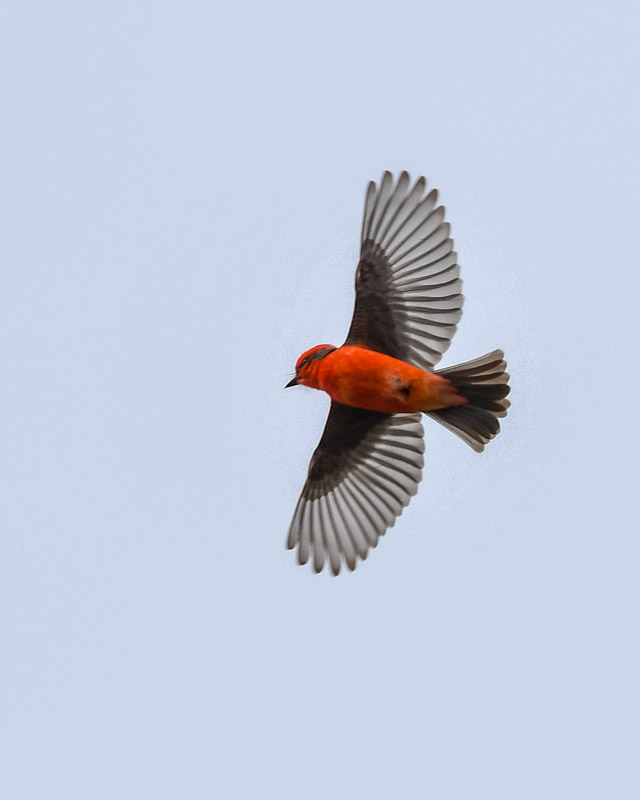
and then he folded his wings and took off.
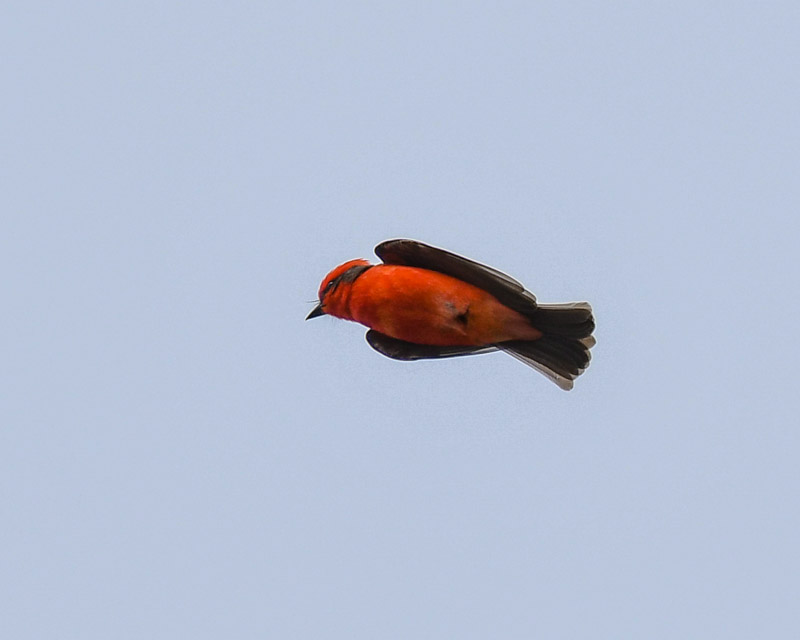
Every March, Tubac is one place to be to see some raptors migrating back north. One of the target birds there is the Common Black Hawk. These raptors have very broad wings and short tails.
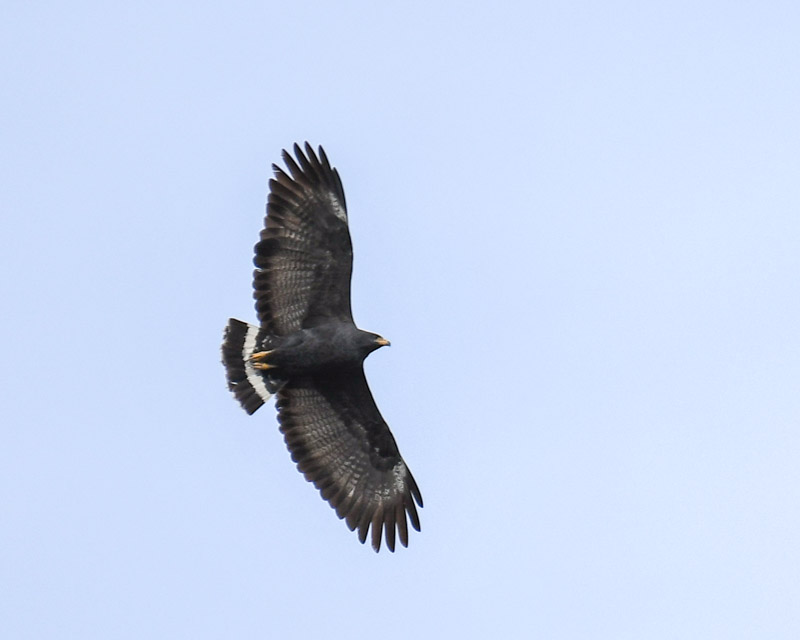
In the entire United States, Common Black Hawks are only seen in the arid Southwest and are limited to the edges of flowing streams. They migrate up the Santa Cruz River and can be seen as they head north. Their range map tells you where they summer:
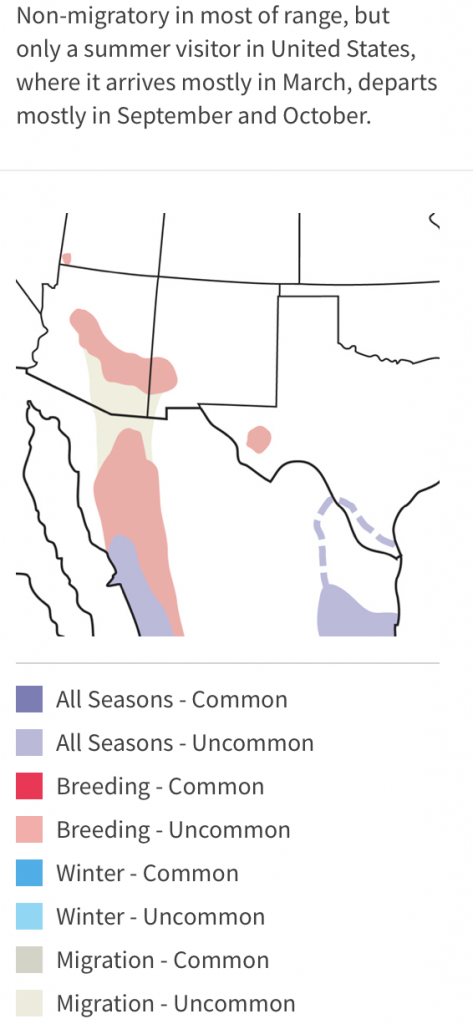
This Common Black Hawk is missing a flight feather.
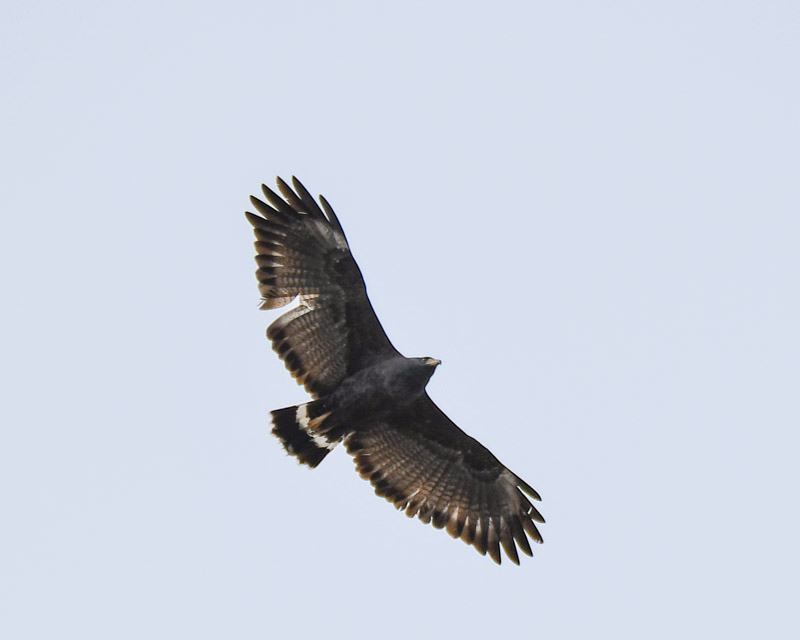
Zone-tailed Hawks are another tropical bird that summers in Arizona and the Southwest. This one was also seen migrating above Tubac. https://www.allaboutbirds.org/guide/Zone-tailed_Hawk/overview
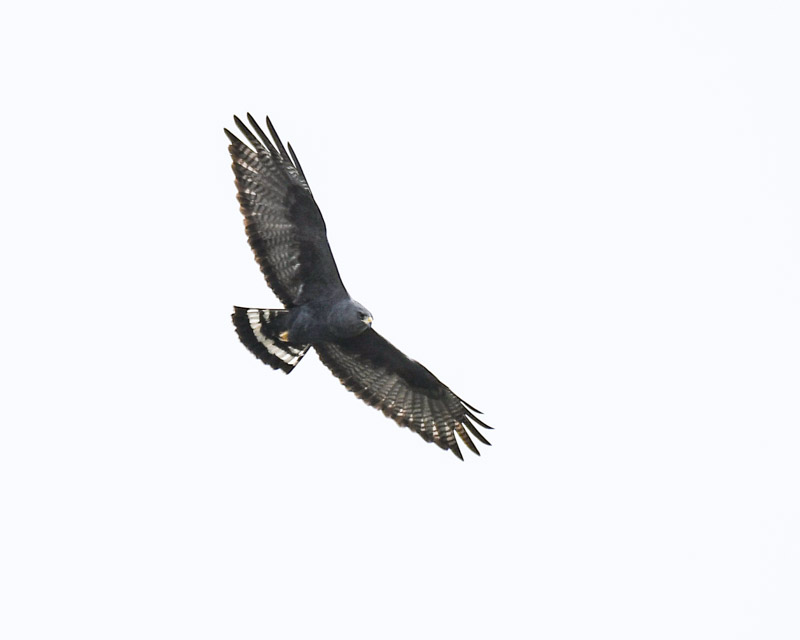
This Turkey Vulture also flew through Tubac. Its dusky red head tells us this is an immature bird and he is looking pretty ragged here. Older flight feathers are tattered and worn and there are spaces where new feathers are growing in, not unlike the toothy gaps in the smile of a first-grader.
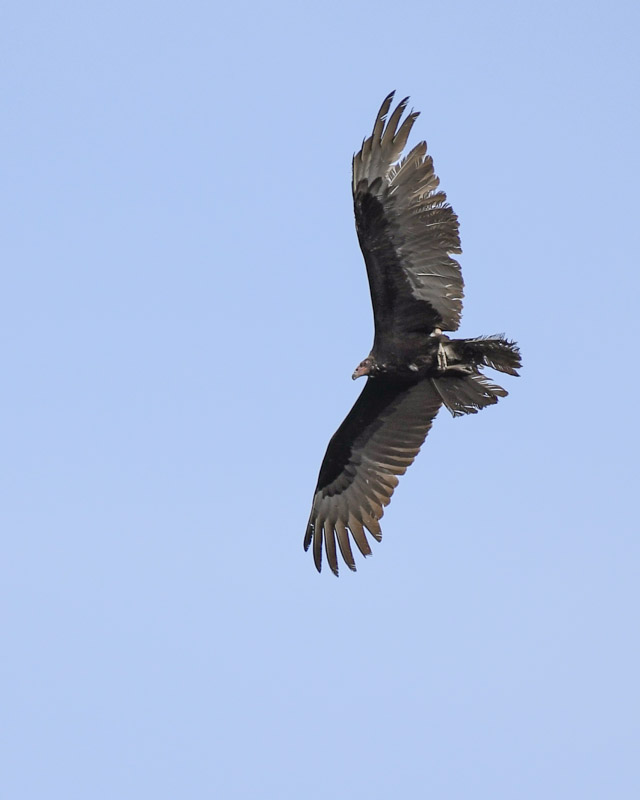
Closer to home, I spent some time mid-town watching a family of Harris’s Hawk. I have a feeling you are going to see a lot of photos of this group in the future!! Here is an adult taking off from a favorite perch.
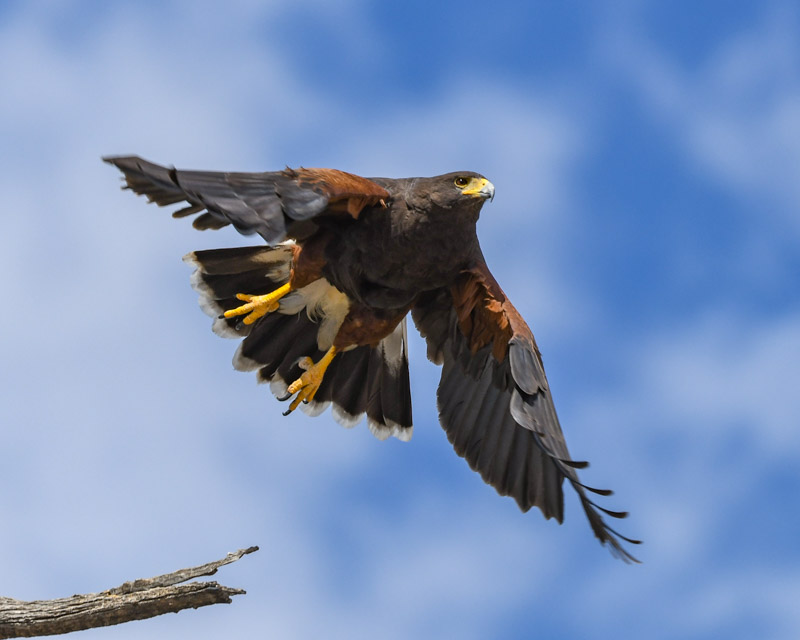
Harris’s Hawks are a dark chocolate brown color with brick red highlights in their wings, a white patch around their rump and a white tip to their tails.
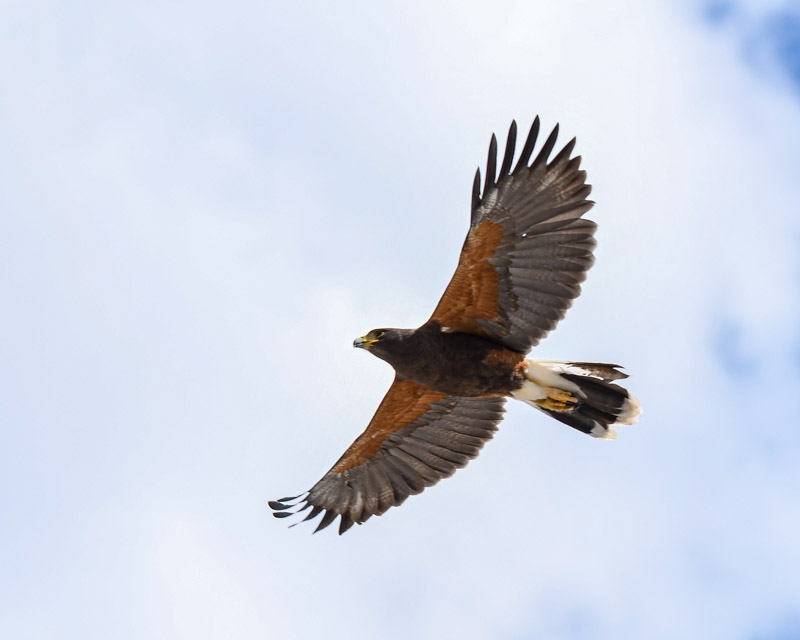
Harris’s Hawks are iconic birds of the arid Southwest. They are very social, living together and hunting in large family groups.
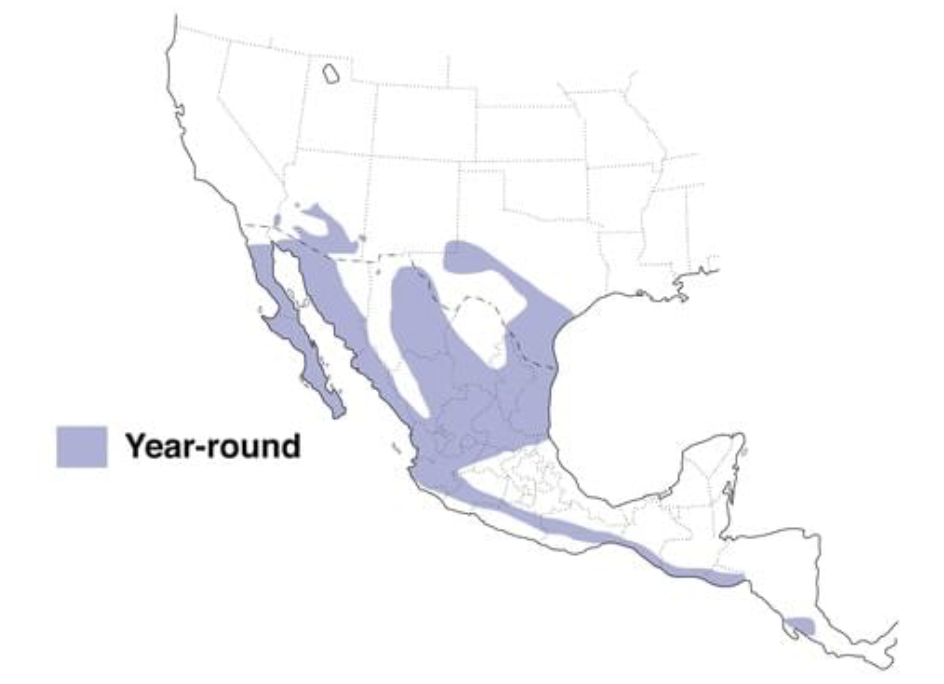
On one recent survey, there were 60 Harris’s Hawk families living in the Tucson Valley. If you look up and around, you may be lucky enough to see one!
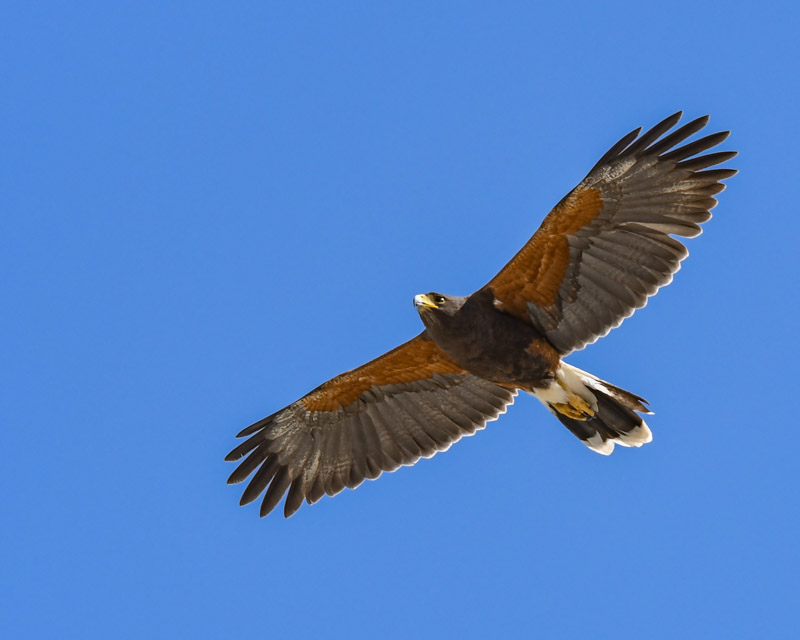
More Harris’s Hawks photos to follow.
